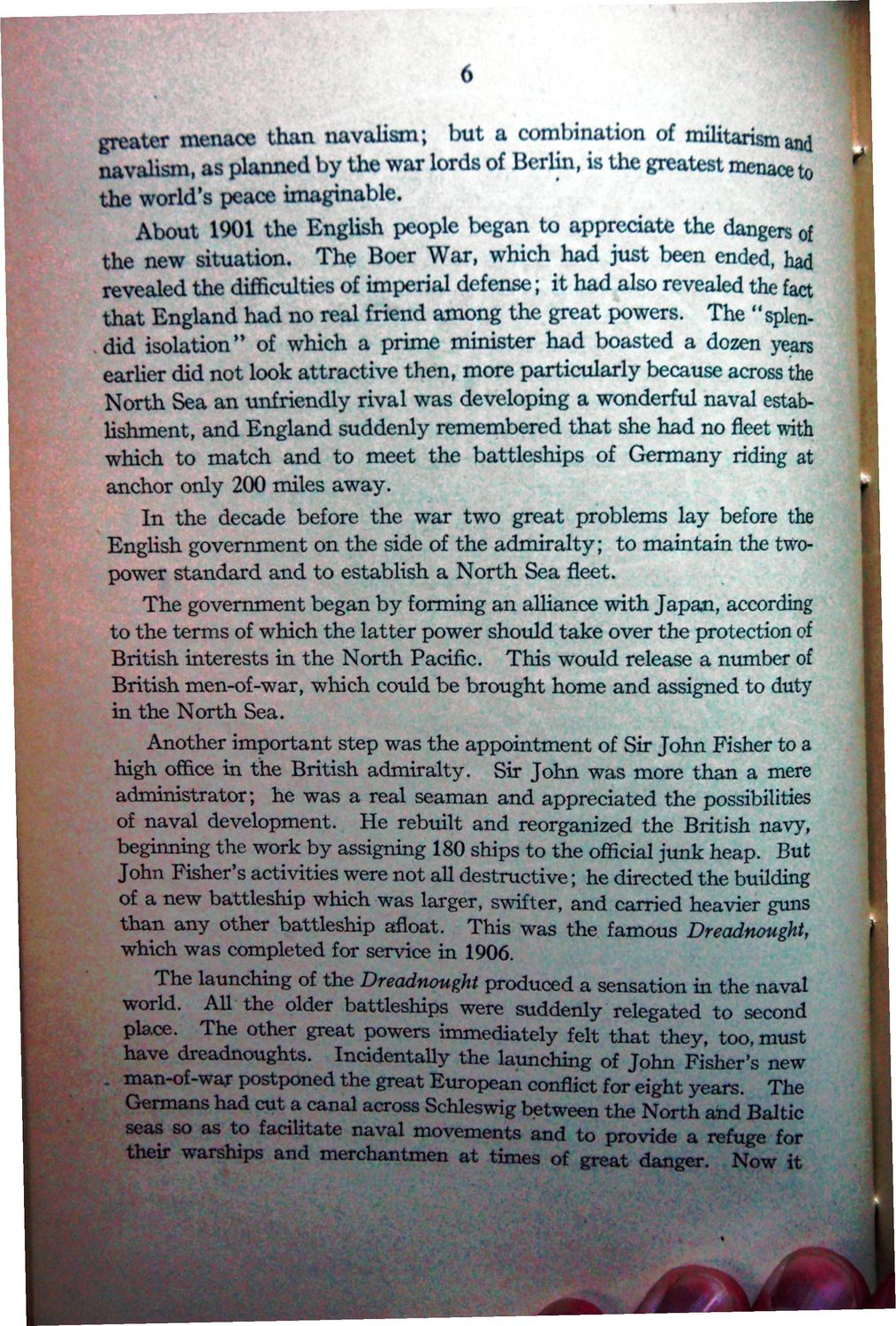| |
| |
Caption: War Publications - WWI Compilation 1923 - Article 15
This is a reduced-resolution page image for fast online browsing.

EXTRACTED TEXT FROM PAGE:
6 greater menace than navalism; but a combination of militarism and navalism, as planned by the war lords of Berlin, is the greatest menace to the world's peace imaginable. About 1901 the English people began to appreciate the dangers of the new situation. The Boer War, which had just been ended, had revealed the difficulties of imperial defense; it had also revealed the fact that England had no real friend among the great powers. The "splendid isolation" of which a prime minister had boasted a dozen years earlier did not look attractive then, more particularly because across the North Sea an unfriendly rival was developing a wonderful naval establishment, and England suddenly remembered that she had no fleet with which to match and to meet the battleships of Germany riding at anchor only 200 miles away. In the decade before the war two great problems lay before the English government on the side of the admiralty; to maintain the twopower standard and to establish a North Sea fleet. The government began by forming an alliance with Japan, according to the terms of which the latter power should take over the protection of British interests in the North Pacific. This would release a number of British men-of-war, which could be brought home and assigned to duty in the North Sea. Another important step was the appointment of Sir John Fisher to a high office in the British admiralty. Sir John was more than a mere administrator; he was a real seaman and appreciated the possibilities of naval development. He rebuilt and reorganized the British navy, beginning the work by assigning 180 ships to the official junk heap. But John Fisher's activities were not all destructive; he directed the building of a new battleship which was larger, swifter, and carried heavier guns than any other battleship afloat. This was the famous Dreadnought, which was completed for service in 1906. The launching of the Dreadnought produced a sensation in the naval world. All the older battleships were suddenly relegated to second place. The other great powers immediately felt that they, too, must have dreadnoughts. Incidentally the launching of John Fisher's new . man-of-war postponed the great European conflict for eight years. The Germans had cut a canal across Schleswig between the North and Baltic seas so as to facilitate naval movements and to provide a refuge for their warships and merchantmen at times of great danger. Now it
| |